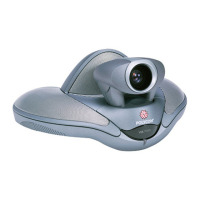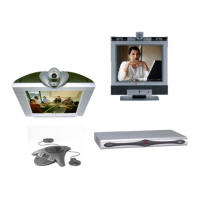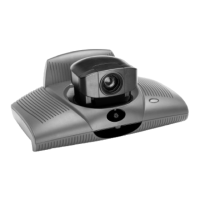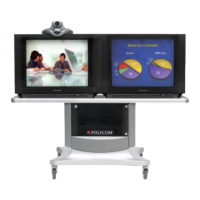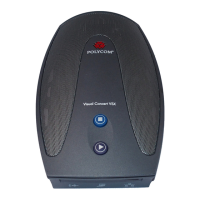TROUBLESHOOTING
© Polycom, Inc. 47 VORTEX EF2280 Reference Manual
Nonlinearity Overdriving the loudspeaker or inserting a dynamics processor between the
EF2280 output and an amplifier before the EF2280 may distort the signal that
the microphones see causing ineffective AEC operation. The EF2280 relies on
the linearity of the acoustic feedback path — D/A, amplifier, loudspeaker,
microphone, and A/D — to cancel acoustic echoes. If you overdrive the loud-
speaker or insert a dynamics processor before the echo canceller, the acoustic
reflections picked up by the microphone do not match the signal fed to the
loudspeaker. They are distorted copies of this signal. The EF2280 cannot
effectively cancel this distorted signal.
If you suspect the loudspeaker is introducing nonlinearities into the room
acoustic path, take these steps to minimize its influence on the echo canceller.
• Keep the loudspeaker’s volume level at less than three-eighths of full
scale. If higher volume is required, the EF2280 should operate effectively
at volume settings of up to 50 percent of full scale. At more than 50 per-
cent, most audio systems and loudspeakers introduce significant nonlin-
earities. The EF2280 may not adapt under these conditions, and echoes
may be heard.
• If the loudspeaker has a bass control, lower it. Excessive bass can cause
a
boomy
effect that is nonlinear. In addition, excessive bass may cause
substantial mechanical coupling to the microphone through vibrations
induced in the housings and support structures and consequently
increase room gain.
• Increase the separation distance between microphones and the loud-
speaker. The EF2280 handles up to 15 dB of room gain between the loud-
speaker and the microphone. You may be exceeding this limit if the
loudspeaker is pointed directly at the microphones or if the loudspeaker
volume is excessive (loudspeaker placement is not critical, but it should
not be pointed directly at the microphones).
C
ONTACTING
T
ECHNICAL
S
UPPORT
If these troubleshooting guidelines don’t resolve the problem you are experi-
encing with the EF2280, please check our web site (
http://www.poly-
com.com
) for the most current technical support information. If you have
further questions, please contact us at:
Polycom Inc.
4750 Willow Road
Pleasanton, CA 94588
Phone: 1 (800) Polycom (765-9266)
Online Help www.polycom.com
Choose eSupport
eSupport is a source for product information, white papers, general ques-
tions, or you may check the status of an RMA.
Before contacting us, please review the warranty and repair policy on
page 63.
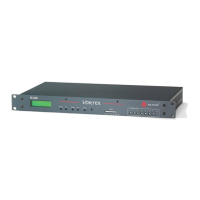
